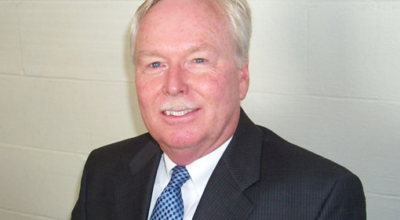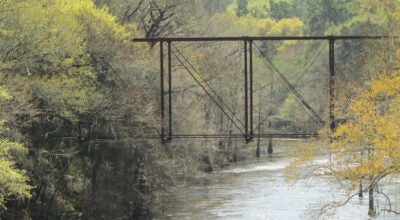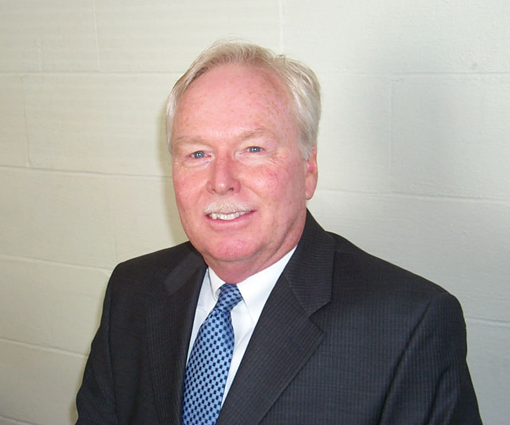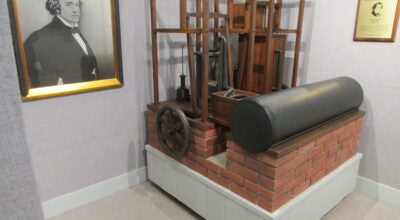Our own treasures
Published 1:51 pm Friday, October 2, 2009
Filmmaker Ken Burns documentary on our national parks now being shown on public television has jogged some long-ago memories when we lived in the West from 1979 to 1989.
At first, I thought his documentary would be a travelogue, itemizing the various top-visited parks with running commentary on their amenities.
But I forgot. Burns is a filmmaker of historic events, and he documented the history of these treasures, how they came about, how they were discovered, exploited, and finally set aside to be managed by the National Park Service.
The two biggies—Yellowstone in Wyoming and Yosemite in California—were covered in detail in the first installments. We learned that Congress was reluctant to set aside lands for “parks” in the late 1800s and early 1900s. When pressured by the public to preserve these lands unspoiled, they failed to appropriate funds for preservation, management and upkeep.
Naturalist John Muir was shocked in later years, for example, to discover sheep grazing in a pristine meadow overlooking one of the major landmarks of Yosemite. Congress had contracted with private developers to allow whatever they wished to do with these lands within the park.
Living in the West as we did for 10 years, many a Sunday was spent packing a picnic lunch, loading into our four-wheel-drive, big tired Bronco and heading into the wilderness.
Utah is stuffed with national parks, and our location in western Colorado near the Utah border was the beginning of canyonlands, that huge geographical area that encompasses much of the desert southwest including the Grand Canyon. We didn’t get around to exploring the actual Grand Canyon until later in our travels, and when finally getting there, it was just more of the same stuff we had been visiting on our Sunday picnic expeditions. If you haven’t visited Dead Horse Point in Utah, or traveled alongside or waded across the Colorado River out of Moab, you haven’t experienced the West.
One of our summer vacation trips included Yellowstone, located in the far northwest corner of Wyoming. It was in the mid 1970s, when gas was rationed, and the government was telling everyone to conserve and vacation close to home. So, we spent a week in a cabin inside the park at Yellowstone.
Yellowstone today gets millions of visitors, so many in fact, that there are times when the park is closed, too jammed with tourists to safely function. For us, in mid 1970s, and amid the gas scare, all those millions of tourists stayed home, and we nearly had the park to ourselves.
It was wonderful.
You do strange things in this environment, like wading through a boggy marsh in a cold-driving rain to get a photograph of a moose feeding off the underwater grasses of a lake bottom. Or sliding down a slippery mudbank into a craggy rocky gorge to get as close as possible to a misty waterfall for one more elusive photograph. And then after getting home, discovering you ran through 40 rolls of film, 36 frames per roll.
Even though it’s August, and there’s a fall chill in the air, nothing beats driving to the northern edge of the park for breakfast in front of a warm roaring fire from a huge stone fireplace at the Teddy Roosevelt Lodge.
Yet as Ken Burns tells us in his documentary, it wasn’t until 1916 that Congress established the National Park Service to administer these lands, and get them out of the hands of the private speculators.
Today, NPS finds itself fighting for funds, having to deal with staff reductions, and less money for maintenance while managing millions and millions of additional tourists each year.
In 1960, popular author John Steinbeck published a book Travels With Charley, in which he took his dog, Charley, and driving a camper truck, tried to re-establish himself with the essence of America. Steinbeck reluctantly visited Yellowstone, only because he knew when he got back home to Long Island, friends and readers would ask why he didn’t go there.
Steinbeck’s position was that the national parks were national environmental distractions, and not true examples of the country, only places to visit so when you returned home, you could tell tall tales to friends that you were there.
Steinback’s Yellowstone visit was brief. Always mild-mannered Charley the poodle, went berserk at the slightest odor or sighting of a bear.
These Ken Burns documentaries should give us pause to think of our own natural environment here in southwest Georgia. Our rivers, streams, lakes and woodlands, Seminole State Park, Lake Seminole, are treasures to be enjoyed and preserved. These are our tourist attractions, part of the national landscape, some vistas even worth capturing on 40 rolls of film, or several hundred at least on a computer chip.





